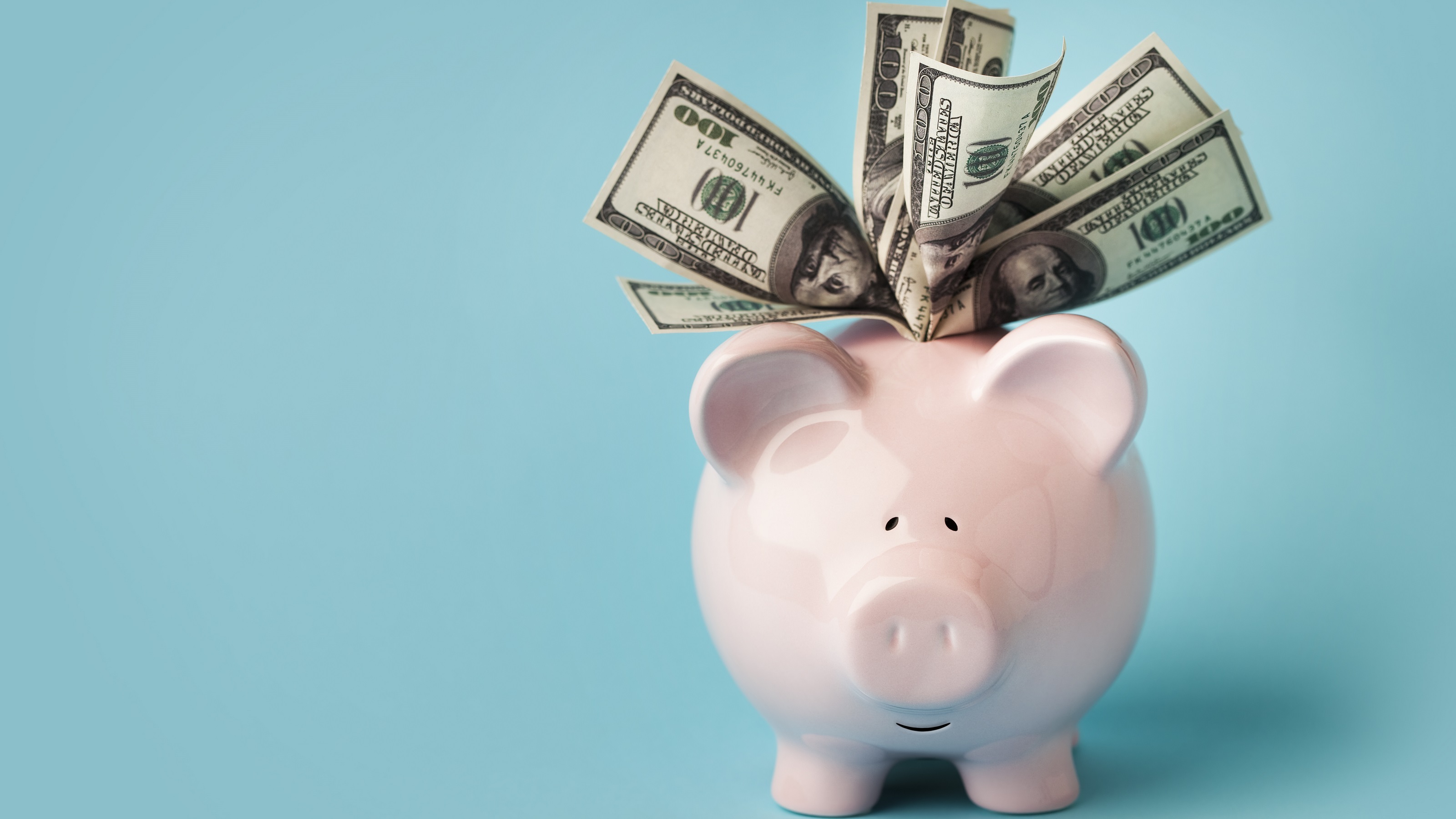I Have $20,000 to Invest. What Should I Do?
We asked a financial expert to weigh in on where to invest $20,000.


Question: I have $20,000 in extra cash on hand. How should I invest it?
Answer: There's not a one-size-fits-all answer to the question because every investor is going to have a slightly different situation that depends on their age, sources of income and existing investments, among other factors.
Perhaps you inherited a little money or got a monster tax refund. Or maybe you're just a diligent saver and have managed to sock away an extra $20,000 above and beyond what you might need for an emergency rainy-day fund.

Sign up for Kiplinger’s Free E-Newsletters
Profit and prosper with the best of expert advice on investing, taxes, retirement, personal finance and more - straight to your e-mail.
Profit and prosper with the best of expert advice - straight to your e-mail.
What's the best way to get that money working for you?
Let's go through a few scenarios to see what might make the most sense for you on investing that $20,000.
Do this if you're starting from zero

If you have no existing brokerage account, company 401(k) plan or other investment account, you're a blank slate.
In this case, the easiest way to get your feet wet would be to open a brokerage account at Charles Schwab, Fidelity or any other reputable broker and put together a simple ETF portfolio. (Here's a handy guide to the best online brokers and trading platforms.)
You can kickstart a good starter portfolio with just two exchange-traded funds (ETFs) – the Vanguard Total Stock Market ETF (VTI) and the Vanguard Total Bond Market ETF (BND).
VTI gives you exposure to virtually the entire U.S. stock market, and BND does the same for the bond market.
Both are two of the best ETFs to buy for their respective asset classes, and both are essentially free to own with expense ratios of just 0.03%. That means that for every $10,000 invested, you're paying $3 in fees each year.
If you consider yourself moderately conservative, something along the lines of 60% invested in VTI and 40% BND is a solid way to go. (This is what's referred to as a 60/40 portfolio.)
If you're young, have a time horizon of 20 years or longer, or are generally comfortable taking on risk, you could invest more in VTI and less in BND, building perhaps a 70/30 or 80/20 portfolio.
Or if you were more conservative, you could increase your percentage in BND.
Just for grins, let's see what that 60/40 portfolio might look like in practice.
Putting 60% of your $20,000 into VTI works out to be $12,000. At last check, VTI was trading around $260 a share, so you would have enough cash to buy 46 shares. That leaves you with $8,000 to invest in BND. The bond ETF was last seen trading around $73, so you could buy 109 shares.
Once per year or so, check your portfolio to see if it has drifted away from your 60/40 target and then buy or sell a few shares of VTI and BND to get back to where you'd like to be.
It's a simple portfolio, sure. But it will give you a good start to building your wealth through investing.
Do this if you already have ample retirement savings or other investments

Now let's say you're not starting from scratch. Perhaps you already have a company 401(k) plan in place that is well funded and invested appropriately for someone your age.
What now?
Well, the 60/40 portfolio of VTI and BND is still a perfectly viable option. But if you are already well on your way to building a proper retirement nest egg, you can also afford to get a little more creative.
You can try your luck with individual stocks or even something more risky, such as bitcoin or other cryptocurrencies. You could also invest in gold or consider using the $20,000 as a down payment on a rental house.
Perhaps the best advice here is to buy something you don't already own. Or, to use financial planning lingo: diversify.
For example, if you already have $100,000 built up in your 401(k) plan, putting $5,000 or more into a gold ETF such as the SPDR Gold MiniShares (GLDM) will give you exposure to something you don't already have in your retirement account.
The same would be true of a modest allocation of $1,000 or so into a bitcoin ETF such as the iShares Bitcoin Trust (IBIT).
It can also be exciting to try your luck as a stock picker or to take the legendary money manager Peter Lynch's advice to invest in what you know.
That coffee shop down the street that you frequent might be the next Starbucks (SBUX), or that brand of shoes that your nephew raves about could be the next Nike (NKE).
If you do want to start investing in individual stocks, just remember to keep your position sizes moderate. A decent rule of thumb would be not to put more than around 5% of the account in any single stock.
Related content
Get Kiplinger Today newsletter — free
Profit and prosper with the best of Kiplinger's advice on investing, taxes, retirement, personal finance and much more. Delivered daily. Enter your email in the box and click Sign Me Up.

Charles Lewis Sizemore, CFA is the Chief Investment Officer of Sizemore Capital Management LLC, a registered investment advisor based in Dallas, Texas, where he specializes in dividend-focused portfolios and in building alternative allocations with minimal correlation to the stock market.
-
 Six Ways to Pay Off High-Interest Debt (and Still Save for the Future)
Six Ways to Pay Off High-Interest Debt (and Still Save for the Future)Get out of debt and reach your goals sooner by starting with a well-thought-out plan.
By Kiplinger Advisor Collective
-
 Vaccines Medicare Covers for Free
Vaccines Medicare Covers for FreeThe U.S. is experiencing an outbreak of measles and is on track to have the most whooping cough cases since 1948; these vaccines Medicare covers for free can keep you safe.
By Donna LeValley
-
 Why You Need a Trusted Contact for Your Brokerage
Why You Need a Trusted Contact for Your BrokerageYour brokerage or bank needs someone to reach out to if it's concerned you're experiencing fraud or cognitive decline. That's where a trusted contact can help.
By John Waggoner
-
 Four Takeaways From Filing Your Taxes to Boost Your Financial Future
Four Takeaways From Filing Your Taxes to Boost Your Financial FutureNow that another tax season is in the rearview mirror for most of us, what lessons can you take from what you learned about your finances to plan for the future?
By Kate Winget
-
 What Claims Adjusters Are Thinking vs What They're Saying
What Claims Adjusters Are Thinking vs What They're SayingAfter a natural disaster, few of us are at our best, but here's what to keep in mind when you're interacting with your insurance company's claims adjuster.
By Karl Susman, CPCU, LUTCF, CIC, CSFP, CFS, CPIA, AAI-M, PLCS
-
 Looking to Make a Job Change? How to Stand Out Like a Pro
Looking to Make a Job Change? How to Stand Out Like a ProTo make a strong first impression in interviews or when networking, skip your job title and work history and use an opening gambit that highlights your talents.
By Anne deBruin Sample, CEO
-
 Stock Market Today: No 'Powell Put'? No Problem
Stock Market Today: No 'Powell Put'? No ProblemInvestors, traders and speculators look beyond both another Trump post and more signs of slowing economic activity.
By David Dittman
-
 First 100 Days: Trump's Impact on Your Finances
First 100 Days: Trump's Impact on Your FinancesHere are some opportunities to consider regarding investing, interest rates and tax cuts as the financial landscape shifts under the new administration.
By Daniel Razvi, Esquire
-
 What Would Happen if You Put Your Tax Refund in an IRA?
What Would Happen if You Put Your Tax Refund in an IRA?Not only could you get a tax break, but the compounding effect over 35 years could turn the average refund into nearly $14,000.
By Romi Savova
-
 Children Can't Afford to Fly the Nest? Here's How to Help
Children Can't Afford to Fly the Nest? Here's How to HelpThe high cost of living means more adult children are staying at home. Here are four ways to help financially so they can eventually spread their wings.
By Kelli Kiemle, AIF®